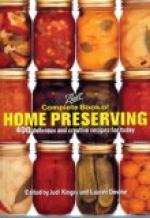BINDING
Books, like our other friends, have an added attraction if tastily clothed. Good cloth bindings, not too ornate or strong in color, are substantial and usually best for the home library. Real leather bindings of morocco or pigskin are rich and suggestive of good food within, but imitation leather must join other domestic outcasts. Though it may look well at first it soon shows its quality of shabby-genteel. Calf has deteriorated because of the modern quick method of tanning by the use of acids, which dries the skin and causes it to crack. Books in party attire of white paper and parchment and very delicate colors are not good comrades, for the paper cover which must be put on to protect the binding is a nuisance, while without it “touch me not” seems to be written all over the book. Our best book friends are not of this kind, but permit us to be on terms of friendly intimacy with them, receiving as their reward all due meed of courteous treatment. There can be no true reverence for books in the heart of the vandal who leaves marks of disrespectful soiled fingers on their pages, turns down their leaves, and breaks their backs by laying them open, face down.
PAPER
Their paper should be of a good quality, not too heavy, and the type clear, both of which conditions usually obtain in an average-priced book. Their housing has much to do with their preservation. Dampness is, perhaps, their deadliest enemy, not only rotting and loosening the covers, but mildewing the leaves and taking out the “size” which gives them body. An outside wall is always more or less damp, and for this reason the bookcase must stand out from it at least a foot, if it stands there at all, and preferably at right angles to it. Dust is also an insidious enemy, from which, in very sooty, dirty localities, glass doors afford the best protection. These must be left open occasionally to ventilate the case, for books must have air and light to keep them fresh and sweet and free from dampness, but not sun to fade their covers. Intense artificial heat also affects them badly, wherefore, the upper part of the room being the hotter, cases should never be more than eight feet high, the use of window seat and other low cases having very decided advantages, apart from their decorative value. Whatever the design of the case—and, of course, it must harmonize with the other wood of the room—its shelves must be easily adjustable to books of different heights, standing in compact rows and not half opened to become permanently warped and spoiled. Varnished or painted shelves grow sticky with heat and form a strong attachment for their contents. The bookcase curtain is useful more as a protection against dust than as an art adjunct, for there is nothing more delightful to the cultivated eye than the brave front presented by even, symmetrical rows of well-bound volumes, so suggestive of hours of profitable companionship. All the books must be taken down frequently and first beaten separately, then in pairs, and dusted, top and covers, with a soft brush or a small feather duster.




